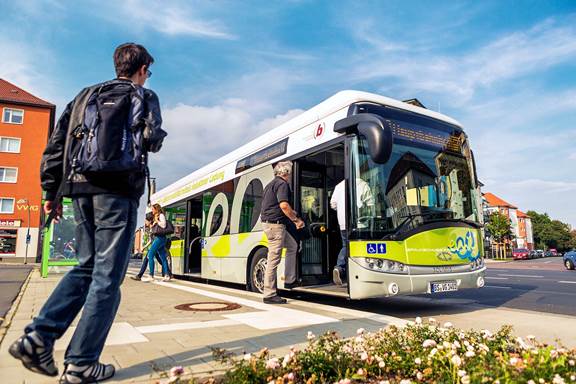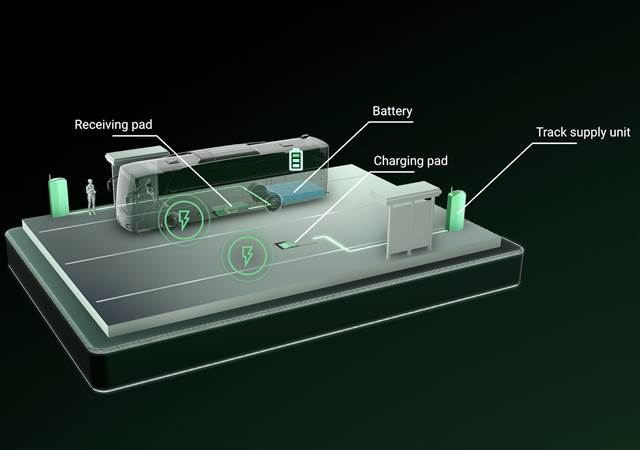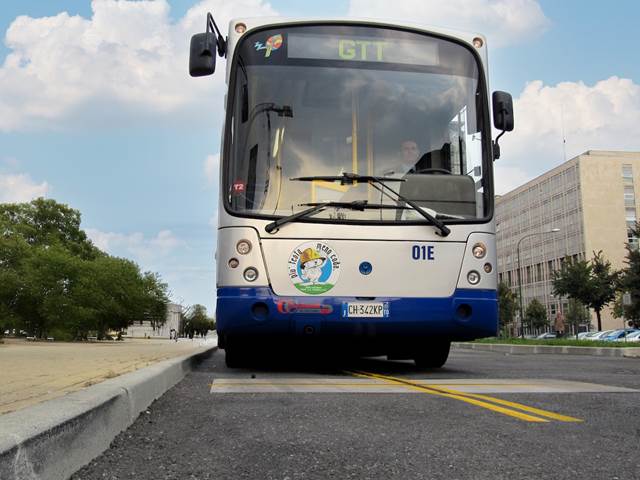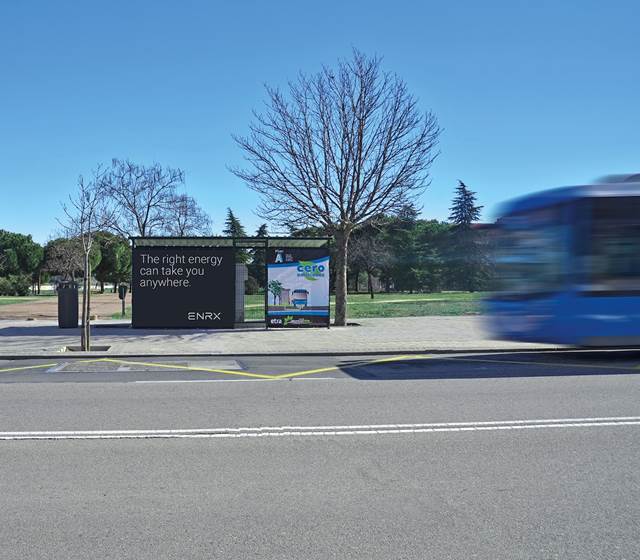
The game-changing public transport solution hidden beneath your feet.
Cities around the world are working to reduce carbon emissions, enhance air quality, and create more liveable urban spaces. Electric buses have become a symbol of this transformation—silent, clean, and capable of replacing diesel fleets. But behind the scenes, considerable hurdles remain for cities that want their own buses to be sustainable and practical for everyday work.
Oversized batteries, costly infrastructure, grid overload, and limited urban space are just a few challenges that city planners and transport operators must navigate. Yet, amidst these challenges, one approach is reshaping how cities electrify their bus fleets: opportunity charging.
Two approaches to opportunity charging.
Opportunity charging rethinks how buses are powered by enabling them to recharge during short, scheduled stops throughout the day. Instead of relying on large batteries that require long charging sessions at depots, buses can “top up” on the way.
There are two main methods of opportunity charging:
- Overhead charging system or pantograph charging: Mechanical arms connect buses to overhead chargers for rapid, high-power charging at stops. Widely used, but visible infrastructure and moving parts can require more maintenance and impact urban aesthetics.
- Wireless opportunity charging: High-power energy is transferred wirelessly through pads embedded in the ground and a receiver under the vehicle. This contactless, low-maintenance system integrates seamlessly into urban environments, though it is less widely recognized than pantograph systems.
Both approaches aim to solve the same problem: enabling efficient, on-the-go charging for electric buses. However, wireless opportunity charging offers unique advantages, particularly in terms of durability, aesthetics, and ease of integration.
Proven technology since 2002
Wireless opportunity charging might seem like a recent innovation, but it has operated successfully for over two decades. It began in 2002 in Genoa, Italy, where ENRX, formerly IPT Technology GmbH, introduced it's first inductive charging system, paving the way for cities worldwide to adopt this transformative technology.
Today, ENRX systems are operational in 14 projects across Europe, highlighting their scalability, reliability, and adaptability in diverse environments. Key examples include:
- London, UK: Wireless charging systems powered three double-decker buses, each delivering up to 100 kW in a test pilot from 2015 to 2020.
- Genoa, Italy: A pioneer in 2002, deploying eight buses equipped with wireless charging technology.
- Turin, Italy: In 2004, Turin installed inductive charging pads for 23 electric buses.
- Madrid, Spain: In 2018, five buses equipped with 100 kW inductive systems began operation.
- Fredrikstad, Norway: Inductive charging supports four e-ferries, demonstrating its applicability beyond buses.
Collectively, ENRX systems have powered electric buses for over 30 million kilometres and e-ferries for more than 300,000 kilometres, demonstrating their reliability in daily operations. While not yet adopted universally, ENRX’s wireless opportunity charging has proven to be a mature and effective solution where implemented.
How it works and why it matters.
The concept of wireless energy transfer dates to Nikola Tesla’s groundbreaking work in the 19th century. It’s a principle we use daily for charging devices like smartphones and electric toothbrushes—and for over 20 years, it has been delivering heavy-duty, high-power energy transfer for applications ranging from electric buses and trucks to industrial systems like forklifts and Automated Guided Vehicles (AGVs).
Wireless opportunity charging uses magnetic resonance to transfer energy between charging pads embedded in the ground and receivers on buses. When a bus stops above a pad, a magnetic field creates an electric current in the receiver, seamlessly charging the vehicle’s battery.
This contactless system requires no plugs or connectors, operates automatically, and integrates invisibly into urban infrastructure. Reliable in all weather conditions—from rain to snow and sand—it delivers maximum power within a second of activation, maintaining a constant energy flow without peak loads or power fluctuations.

ENRX Primove system setup

Turin, Italy – 23 electric buses wireless powered by ENRX
Powering public transport for decades
Turin, Italy: Leading the way since 2004
Turin adopted wireless charging in 2004, installing charging pads at key stops for its fleet of 23 electric buses. Over 20 years of operation, the results speak for themselves:
- Battery longevity: By maintaining batteries at optimal charge levels (30–80%), no replacements were needed during the project.
- Operational reliability: Buses cover up to 200 kilometres daily with frequent, short charging stops.
- Cost efficiency: Despite higher upfront costs, the system achieved a lower total cost of ownership than both diesel and conductively charged electric buses.
Braunschweig, Germany: A benchmark for sustainability.
Since 2014, Braunschweig has relied on ENRX’s Primove 200 kW inductive charging system to power its fleet of five e-buses: one 12-meter bus with a 60 kWh battery and four 18-meter articulated buses with 90 kWh batteries. By 2025, these buses will have travelled over 4.5 million kilometres, reducing CO₂ emissions by nearly 3,000 tons.
This showcases how wireless opportunity charging combines high-power and compact battery systems to deliver diesel-equivalent performance with significant environmental and operational benefits.
Economic and operational advantages
Wireless opportunity charging is redefining the economics of fleet electrification. Instead of relying on large, costly batteries, buses can recharge frequently throughout the day—cutting battery size and related costs by up to 50%. Charging at optimal levels also extends battery life, reducing the need for replacements.
With no moving parts, inductive systems require far less maintenance than overhead chargers, which can cost up to 15% of their purchase price annually. The infrastructure is leaner too: embedded pads take up less space and demand less from the grid, lowering installation costs.
Operationally, wireless charging allows buses to stay on the road longer, reducing downtime and the need for extra vehicles. It also streamlines workflows—less time spent detouring to depots means more time focused on serving the city.
For cities looking to electrify efficiently, the case for wireless opportunity charging is as much economic as it is environmental.
Addressing scepticism
Despite its proven history, wireless opportunity charging sometimes faces questions about its efficiency and scalability. Here’s how it performs:
- Efficiency: Wireless systems achieve over 92% efficiency and start charging instantly at full power, delivering 3.33 kWh in a 1-minute stop with 200 kW. In contrast, a 300 kW pantograph system charges for maximum 30 seconds due to connection and disconnection time caused by moving parts, delivering 2.5 kWh.
- Safety: Systems comply with ICNIRP 2010 guidelines, with emissions far below the 27 µT threshold. ENRX systems operate at just 3.18 µT, ensuring safety for drivers, passengers and pedestrians.
- Standardization: Ongoing efforts like the SAE J2954/2 standard for heavy-duty vehicles and collaborations between industry leaders are ensuring compatibility across manufacturers, supporting seamless integration and broader adoption.
- Power capacity: Charging speeds up to 300 kW enable rapid top-ups during short stops, keeping buses on schedule.
These features, combined with real-world success, make wireless charging a trusted solution for modern urban transport.
A vision for the future
Imagine a city where buses glide silently through the streets, seamlessly charging at stops without cables, connectors, or bulky infrastructure. This isn’t a distant vision—it’s already happening in cities like Braunschweig and Madrid.
By adopting wireless opportunity charging, cities unlock a cleaner, more efficient future for public transport. This proven technology helps overcome electrification challenges while creating quieter, greener environments.
The future of public transport isn’t about waiting for breakthroughs. It’s here—and powered by wireless opportunity charging.

Madrid, 2018 – 5 buses with ENRX 100 kW inductive charging